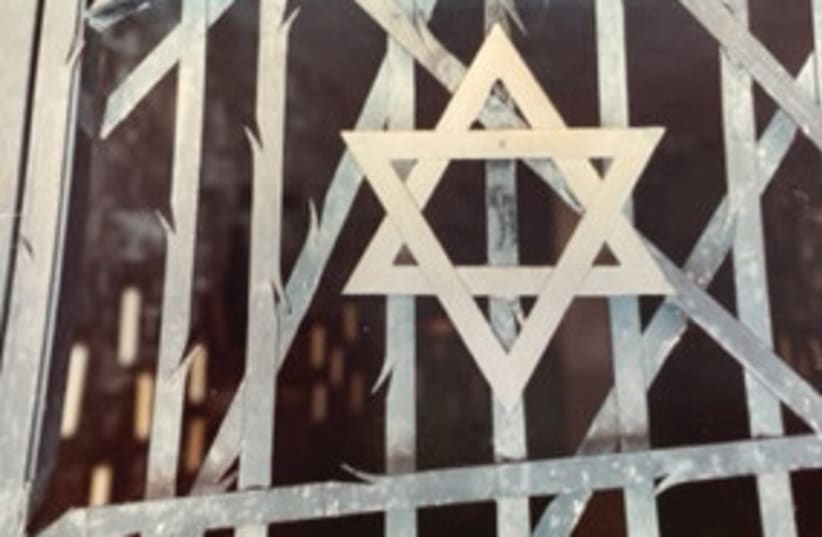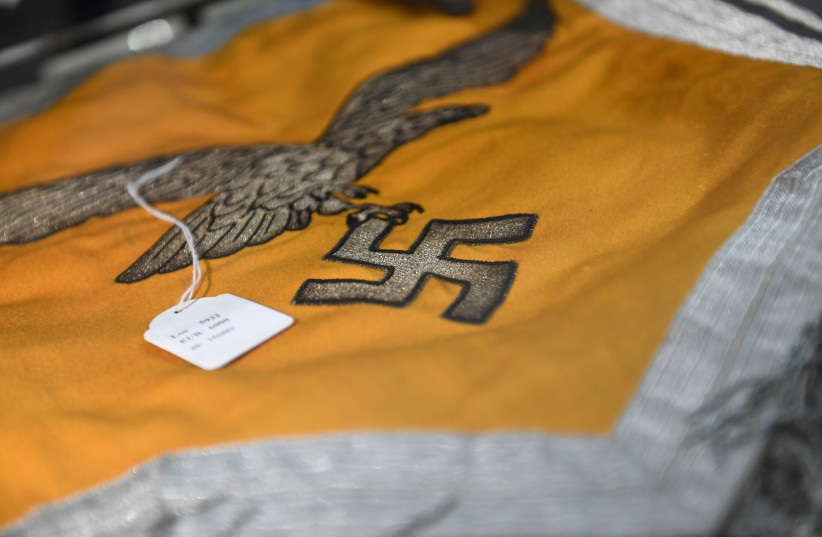At the center of Old Munich is Marienplatz, the Town Hall Square whose buildings and monuments date back 500 years. Almost 18 km. northwest of Munich stands Dachau, a small town where the first Nazi concentration camp was established, on March 10, 1933. It is Friday morning, August 3, 1984. I am 20 years old.
We walk off the touring bus and onto the Marienplatz at about 10:45 a.m. Crowds wait for the chiming of the Glockenspiel. Every morning at 11 o’clock, the colorful Bavarian figurines of the Neues Rathaus, the New Town Hall at Marienplatz 8, move mechanically in a circular motion accompanied by the sounding of the chimes.
I leave our group – 13 Jewish high school and college students touring in Europe – and walk through the square. The New Town Hall dominates the Marienplatz and this is the first building I pass. The neo-Gothic structure took 40 years to build and was completed in 1908. The main, south facade of the Rathaus is richly ornamented with buttresses, balconies and towers. The largest of the towers is 80 meters high and the figurines of the Glockenspiel stand outside its open arched bay windows. To my left is the Mariensaule, a marble column topped by a statue of Madonna, erected by the Elector of Bavaria, in 1638.
The shoppers gather around street performers, laughing and speaking to one another, embracing their children and enjoying themselves. I can only see Jewish-owned shops with the word “Jude” painted on the windows; elderly Jews being kicked, spat upon and ridiculed by their fellow countrymen; and synagogues defaced and destroyed during Kristallnacht. Most of those walking on the Marienplatz were born after the Shoah. However, I am a Jew walking through Munich – logic and rationality are negated by memories of a slaughter that occurred not long ago.
The Glockenspiel is to begin chiming soon. I return to Marienplatz 8. The tourists wait anxiously for the chimes and the moving figurines of the New Town Hall. Precisely at 11 o’clock, the bells begin to ring. I look up at the Rathaus tower and see the colorful figurines standing on three separate levels on the balcony.
Those on the middle level begin to move. The individual figures seem to be men in suits of armor riding horses. “Knights,” I say, “two knights involved in a jousting match.” The word “knight” immediately triggers a series of pictures in my mind: thousands of Jews being massacred by crusaders in France and Germany; the destruction of the Rhineland – Worms, Cologne – centers of Jewish scholarship that were razed in 1096.
The chimes of the Glockenspiel are deafening. But the noise is overpowered by the visions of my ancestors’ communities burning, their synagogues being plundered and their corpses scattered along the Rhine. I do not know that the Glockenspiel scene I am viewing represents a tournament event held on the occasion of the marriage of Duke William V and Renate of Lorraine, in 1567, centuries after the First Crusade. At Marienplatz 8, chronology is pushed aside by a stronger force: centuries of hatred of Jews.
Suddenly, the movement of figurines in the middle level of the tower balcony ceases. The figurines in the lower level begin their journey. They are Bavarian barrel makers frozen by their sculptor in mid-step: this is the Dance of the Coopers, a reminder of the terrible plague years from 1515-17.
Coopers and hassidim
THESE DANCING, Bavarian coopers receive applause from the delighted crowd. I stare at the figurines. No longer are they 16th-century coopers but 20th-century hassidim, pious Eastern European Jews who are dancing and singing themselves into ecstasy to come closer to God. The sound of the chimes starts to warp into a distant rumbling that seems to be coming closer.
I hear the staccato of machine gun fire. Its volume increases with each chime. I hear the cries of the dancing Jews as they fall into the pits they have dug with their own hands. I see my distant relatives in Pinsk being shot by the drunken officers of the mobile killing units, the Einstazgruppen, in July 1941. I hear the machine gun fire, the screams and the sobbing of one million victims of the four Einsatzgruppen.
The chiming continues as the coopers dance and the screams continue as old photographs I have seen return from memory: Jews, young and old, being led to their execution in Ponary, the ninth Fort, Babyn Yar and Lvov, as SS men laugh as the victims attempt to cover their nakedness. I hear the screams of Jews in Birkenau, Treblinka, Sobibor, Belzec and Chelmno and the cries of terror from death by gas. The screams and the chimes of the Glockenspiel fuse – they are one. A feeling of shame passes over me: my own vague nightmare seems to belittle the suffering of one million Jewish children, five million Jewish adults and millions of other humans whom the Nazis murdered.
The chiming of the Glockenspiel pauses and the horrible cries leave me. The uppermost level of the balcony presents its lone, small figurine: a crowing cock. The sound of the chime changes slightly and mimics the sound of a bird at cockcrow. Yet, I can only hear the whistle of trains packed with human cargo.
I can only see 300,000 Warsaw Jews being loaded like cattle onto trains for Treblinka by smiling SS men brandishing truncheons. I see 400,000 Hungarian Jews destroyed in Birkenau in 10 weeks during the summer of 1944. The mouth of the bird opens but it is not his crowing chime that I hear, only the whistle of trains heading for the death camps of Auschwitz, Sobibor and Treblinka.
The whistling disappears. The chiming stops. The tourists applaud and begin to disperse. In envy, I look at them and ask myself: Can’t a Jew in Munich who stands at Marienplatz 8 listening to the chimes of the Glockenspiel simply enjoy the beauty of the colorful figurines, the aesthetics of the Rathaus facade and the clarity of the chimes without thinking of mass graves, gas chambers and crematoria? No.
For the destruction of European Jewry – the systematic murder of one out of every three Jews living on earth – took place in our epoch, a minute span in the history of mankind. Memory must overcome the ravages of time. We must see photographs of the Holocaust period and read the accounts of those who lived through it.
The writer is a rabbi, essayist and lecturer in West Palm Beach, Florida.

